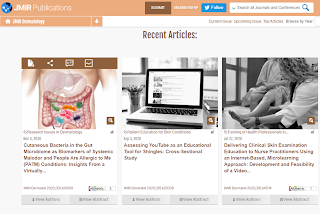There is increasing evidence that intestinal microbial dysbiosis has a role in the pathogenesis of systemic malodor conditions and other metabolic disorders. The most studied non-syndromic malodor condition Trimethylaminuria is usually inherited in an autosomal recessive fashion, which means that two mutations from both parents, both affecting abilities of FMO3 enzyme to catalyze the N-oxidation of trimethylamine into trimethylamine (eg, [Glu158Lys (rs2266782) and Glu308Gly (rs2266780)]), may be needed for a person to have symptoms. Yet genotype is not always predictive of phenotype, not even in this case.
 |
| Illustration by Monica Garwood |
Studies have shown that the symptoms of metabolic inefficiencies, food intolerance and even allergies can be relieved by changing the composition of intestinal microbes and adjusting dietary components feeding these microbes - to encourage growth of microorganisms properly digesting problem ingredients. Lactose-digesting bacteria Lactobacillus acidophilus, Lactobacillus bulgaricus and Streptococcus thermophilus, for example, can help to digest lactose into useful compounds, instead of offensive gas. On the other hand, the low-FODMAP diet reduces gastrointestinal symptoms by reducing the food that bacteria ferment. For lactose-intolerance, however, the "O" in FODMAPs - oligosacharides - can be beneficial as Galacto-oligosaccharides (GOS) are useful prebiotics promoting the growth of the right microorganisms.
Rebuilding the network of microorganisms on and inside our bodies can help to improve the volatiles in the surrounding air, aka body and breath odor. Microbes associated with unpleasant odors include Anaerococcus, Corynebacterium, Campylobacter, and Propionibacterium [1], Gardnerella, Alloprevotella, Sutterella, and species of Candida. Microbes associated with improvements in odors include archaebiotic Methanomassiliicoccus luminyensis, Lactobacillus pentosus KCA1, and Lactobacillus salivarius, but there are more, working together and relying on each other. Our studies (see protocols of microbiome [2] and volatilome [3] trials published on Medrxiv) identified several microbial strains and volatile compounds associated with improvement of malodor symptoms. We are currently summarizing our results and plan to publish it. Development of personalized protocols and defining the right compositions of probiotics and prebiotics is a long-term research endeavor. Meanwhile, be your own best medical researcher and take control of your wellbeing:
Step 1: Pull out your fitness journal and create an action plan
- Analyze your diet, everyday activities, exercise and sleep patterns to make initial guesses about things that could be triggering your flareups or making you feel better. Write out a list of these things.
- Break your goal into small steps and milestones. For example: if you have fructose as a potential trigger on your list, go fructose free for a week. An earlier survey of about 100 body odor and halitosis sufferers indicated stress (34%), food (25%) and environment, including the weather and perfumed products (15%) as main triggers of odors or PATM. Make sure you are not missing something in your diet - like Zinc, Vitamin C, or Vitamin D - insufficient amounts of these vitamins and minerals could also contribute to PATM.
- Develop metrics for evaluating progress. Some people can't objectively evaluate their malodor or PATM condition. Try to find a trust buddy or take note of how the people around you react when you’re in close proximity. For example, pay attention to the space people leave between you and themselves (assuming COVID-19 is behind us and the 6-feet rule no longer applies!)
- Intestinal lining is regenerating every five to seven days, so you need to stick to your diet for at least a week to notice improvements in your symptoms. Most elimination diets are actually recommended for about 3–6 weeks, to allow the antibodies (negatively reacting to problem food components) dissipate. So if your diet seems to be helping, extend it to 3 or 6 weeks.
- If it is not helping, try the next thing on your list. It should not be just diet - one study showed that bad breath was associated with abnormal sleep patterns. Perhaps you need to reevaluate your clothing material, temperature an humidity or mycotoxins in the environment? Are you getting enough sunlight ? Does your home have a healthy microbiome? Try to eliminate the triggers one at a time. No need to reduce your overall food intake, many people observe malodor or PATM flareups when they are hungry & undernourished. Try to train your body to digest more fiber - but start adding them to your diet little at a time, on weekends when you can safely experiment.
Step 3: Let go of past hurts
- Stop dwelling on the past. You have the power to change your future. Learn how to express confidence with your body language. Pretend you are comfortable in presence of other people and they will learn to be comfortable in yours.
RFRERENCES
1. Gabashvili IS. Cutaneous Bacteria in the Gut Microbiome as Biomarkers of Systemic Malodor and People Are Allergic to Me (PATM) Conditions: Insights From a Virtually Conducted Clinical Trial. JMIR Dermatology. 2020 Nov 4;3(1):e10508.
2. Gabashvili I.S. Dynamics of the Gut Microbiota in MEBO and PATM conditions: Protocol of a fully remote clinical study. medRxiv. 2020 Aug.24. medRxiv 2020.08.21.20179242; doi: https://doi.org/10.1101/2020.08.21.20179242
3. Gabashvili I.S. Effects of diet, activities, environmental exposures and trimethylamine metabolism on alveolar breath compounds: protocol for a retrospective case-cohort observational study medRxiv 2021, Jan. 26 2021.01.25.21250101; doi: https://doi.org/10.1101/2021.01.25.21250101

